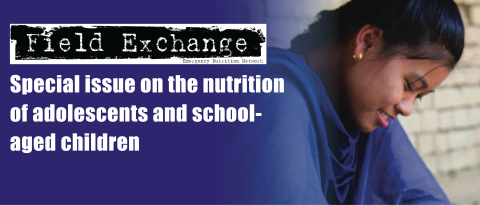Adolescent Nutrition and Anaemia Course
In September 2019, Nutrition International launched the Adolescent Nutrition and Anaemia course – a free, 15-module online course with the aim of building capacity to improve nutrition for adolescents around the world. Unfortunately, adolescents are often overlooked and underfunded in health and nutrition interventions, despite this period being a critical window for growth and development. The burden of broader malnutrition and specific micronutrient deficiencies imposes barriers to adolescents realising their full potential. This is especially true for girls who have specific, and often overlooked, biological needs compounded by detrimental social and gender norms. The impact of iron-deficiency anaemia, which is the leading cause of ‘healthy’ life years lost for adolescent girls, is of great concern. Nutrition International’s Adolescent Nutrition and Anaemia course sheds light on this issue, providing valuable insight and guidance regarding this unique and valuable population group.
Designed by Nutrition International’s world-class team of technical experts and programme implementers, this course fills a critical gap in knowledge. It provides practical information to apply to regional, national and global programmes, geared towards helping adolescents to thrive and fulfill their potential. In sharing their rigorously obtained knowledge, Nutrition International hopes to enable other organisations to join the global battle against adolescent malnutrition.
The course has 15 modules which cover a wide range of information on adolescent nutrition, the global situation and the impact of anaemia on women and adolescent girls. Also examined are the causes and consequences of anaemia, the role of iron in the body and some existing interventions used to improve adolescent nutrition at present. The course also covers global guidelines, an adolescent pregnancy sub-section and related partnerships in the field as well as an overview of Nutrition International's adolescent nutrition programmes and lessons learned. Finally, the course includes information on the link between nutrition and education, adolescent health systems, monitoring and assessing adolescent nutrition programmes, data gaps, research needs and how to engage adolescents. Although the course is delivered in English, the narration transcripts for all 15 modules are also available in Bengali, French, Bahasa, Urdu, Gujarati, Hindi, Amharic and Swahili.
There are no necessary prerequisites to begin the course but learners are required to complete the modules in chronological order to progress to the next. The course revolves around video-based learning with the content accessible to a wide audience of nutrition programme officers, non-nutrition development organisations, nutrition graduate students and policy makers at various levels. A personalised certificate is provided upon completion of all 15 modules.
You can sign up for the course free of charge at: nutritionintl.org/learning


